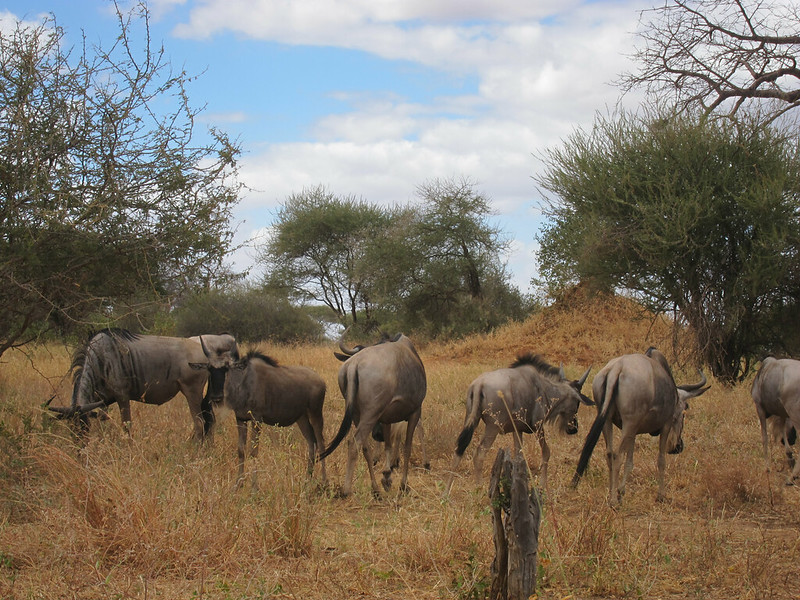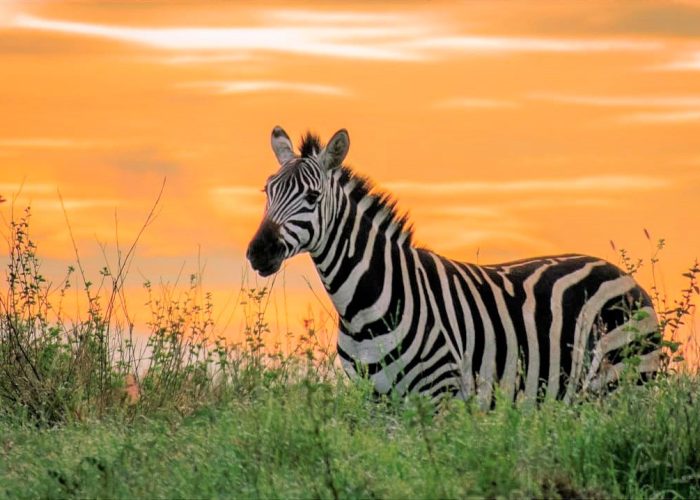Mkomazi National Park
Home to rare species of black rhino and located near the breathtaking Usambara mountains.
Welcome to Mkomazi National Park
Set below the verdant slopes of the pare mountains and the ionic snowcapped peak of Kilimanjaro Mountain ,Mkomazi despite its breathtaking beauty and immense sense of space –remaining one of Tanzania’s least publicized natural treasures a southern extension of Kenya’s legendary Tsavo West National Park.
The Park finds itself in a beautiful setting with both the Pare and Usambara mountains towering above its boundaries. Depending on the weather, Mount Kilimanjaro can also be seen from the park. To the south the pare and usambara mountains form a dramatic backdrop and to the north, Kenya’s vast Tsavo National Park shares a border with Mkomazi, making common ground for migratory herds of elephant, oryx and zebra during the wet season. Together with Tsavo, it forms one of the largest and most important protected ecosystems on earth.
Mkomazi derives its name from Pare-ethnic language; “Mko and Mazi”. “Mko” means a traditional tiny wooden spoon used by the Pare people for eating and “Mazi” means water. This implies that the water in the Park is hardly enough to fill up the wooden spoon. It covers an area of 3,245sq km.
Great Migration
The Serengeti ecosystem is famed for its Great Migration; this is arguably the park’s biggest draw. Millions of wildebeests, thousands of zebras, gazelles, and elands move clockwise from the north of Serengeti to the south, the west, and back to the north. These vast herds move in search of green grass and water; they create a seamless spectacle, one of the ultimate of its kind in the world. In addition, it is rumored that wildebeest can smell the rain from thousands of kilometers; this is how they become alert to where there are fresh pastures to go.
June to October is the dry season in central and south Serengeti, so the massive herds are due north, they travel through the western corridor crossing the crocodile-infested Mara River, creating a treacherous spectacle where hundreds of wildebeests are caught and killed by the hungry crocodiles, and this is one of the most naturally entertaining hunts one can see.
December to February is famously known as calving season. The wildebeests move to the now-wet south, and another extraordinary thing happens, the wildebeests have synchronized births! This wildebeest migration is fascinating and unusual, but it is the yearly norm; about 8,000 wildebeests are born daily. This spectacle also attracts predators like lions and leopards, so they quietly move to the enormous herds. They hunt down the wildebeests and claim hundreds of babies and some mothers, too, in the process.
Climate
The climate in Mkomazi is usually dry and warm to hot. The warmest months are October to April and coldest months are May to September.
It also experiences two wet seasons, the long rains which are from March to May and short rains are from Novermber to December. Mean annual rainfall ranges from 570 mm in the lowlands to 1,910 mm in the highlands.
Getting there
The Park can be accessed by road and air.
Road:The Park is 120km from Moshi. Same to the nearest entry gate is 6km on a graveled road. The Park is also easily accessible on special arrangement through Njiro, Kivingo and Umba gates.
Air: Chartered flights are available to Kisima airstrip in the center of the park near the rhino sanctuary.
Wildlife & Attractions
Attractions
The animals of Mkomazi are typical of the arid area. Giraffe, oryx, generuk, hartebeest lesser kudu, eland, impala and grants gazelle share the park with elephants, buffalo and numerous predators including lions, leopards and cheetah.
- Black Rhinos
Black Rhinos spend their days and nights grazing and only sleep during the hottest parts of the day. When they aren’t eating, they like a cooling mud soak. Ride into Mkomazi to come and see these majestic and powerful creatures that conquered the world.
- Wild dogs
These long legged canines can only be seen in abundance when you visit Mkomazi. Their four toes per foot unlike other dogs make them unique. They live in packs therefore they are social animals and communicate by touch, actions and vocalizations.
- Unique Vegetation
Mkomazi marks the southern tip of the sahel zone which resembles that of a dry desert like landscape. Due to the climate, the vegetation consists of Acacia commiphora woodlands and towards the western mountains the vegetation changes to a dry land forest.
- Bird species
A healthy population of 450 species are also found in the park and several species can be seen during a game drive. The most commonly seen species include go away birds, ostriches, long crested eagles and bustards. Doves, hornbills, weavers and guinea-fowl are all present in large numbers as well as such shrinking species as the martial eagle and violet wood-hoopoe.
Activities
There are several tourism activities inside and outside the Park
- Day Game Drive
This is the main tourism activities in the park where visitors visit different areas of attraction inside the Park using vehicles during the day.
- Walking Safaris
In Mkomazi visitors have an opportunity to walk around the Park with an armed trained Park Ranger. Can do short walk around Dindira or Long walk starting from Zange area (Park’s Headquarters) to Babus area.
- Bird Watching
The park has more than 450 bird species, including the migrants ones, birds of prey and water birds, hence makes this the best area for bird lover visitors to enjoy this activity within Park.
- Filming
Mkomazi National Park has a good scenery full of natures beauty, and other attractions found in abundance, this makes it an ideal area for filming.
- Nature Walk
Nature walk can be done in Nilo and Amani Nature Reserves near Muheza town. Walking and Hiking in Chome Nature Forest Reserve in Same.


